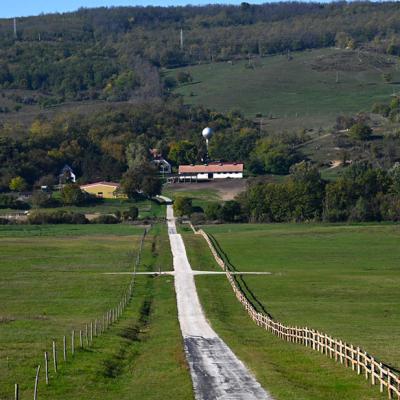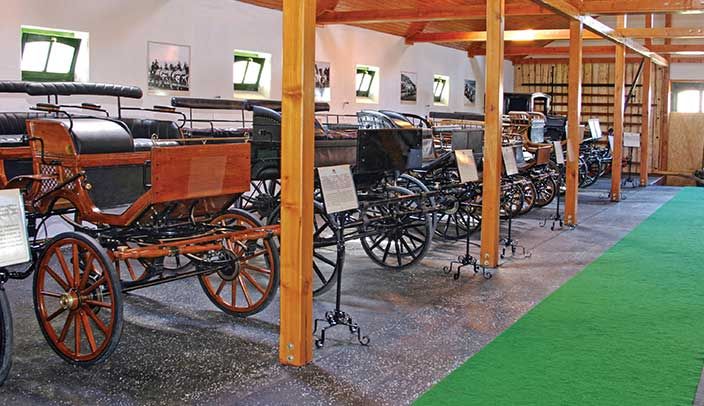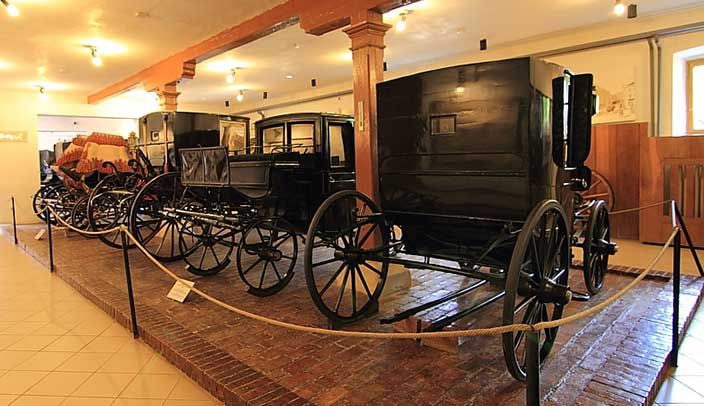Marócpuszta
Stud visit - Marócpuszta (Kőröshegy, on the southern shore of Lake Balaton)
| Kategória | Árak | fő |
| Discounted (student, retired ID) | 850 |
HUF/ person |
| Adult | 1.500 | HUF/ person |
(Pre-registration is required - at least one day before arrival - at one of the following contact numbers: +36 30 436-2367, or by e-mail: )
History
The Gidrán is a distinguished native horse breed originally bred as a military saddle horse in Mezőhegyes. Throughout its history, this yellow-colored breed has faced several near-extinction events.
The first major setback occurred on March 20, 1920, when Romanian royal troops occupying Mezőhegyes took 74 out of the 98 Gidrán mares inventory as war loot. Eleven mares were lost during the battles, leaving only 13 survivors.
From this critically reduced stock, the mare population was increased to 90 by 1944. However, due to losses from World War II, 28 mares were repatriated from Bergstetten, Germany, in 1948.
Just as the population began to recover, a political decision in 1957 moved the entire Gidrán population from Mezőhegyes to the Dalmandi State Farm. The breeding management strategy of the 1960s and 70s focused on reducing traditional breeds and crossbreeding their foundation mares with Western breeds. By 1973, the entire Gidrán population consisted of only 3 purebred stallions and 16 foundation mares.
In 1974, a government decree was passed for the protection of native animal breeds, and the Gidrán was the first horse breed to receive protected status.
To expand the foundation stock, in 1975, the National Animal Breeding Authority, with the assistance of Professor Imre Ócsag from the Animal Breeding Research Institute, purchased 21 Gidrán mares from a popular breeding stock and 2 stallions from Bulgaria. A new breeding farm was established in Borodpuszta, near Mindszentgodisa in Baranya County. Of the two imported stallions, one, Walter, died during his first covering, while the other, Gomul Gidran IV, established a successful lineage. The Borodpuszta stock was moved to Szántódpuszta in 1976.
Szántódpuszta, formerly the estate of the Tihanyi Abbey and later the property of the poet and language reformer Ádám Pálóczi Horváth, became a protected historical monument in 1974. The estate was managed by the Somogy County Council’s Tourism Office (later Siótour). Dr. János Fodor, then head of the office, believed that after the historical renovation, Szántódpuszta should operate as a living entity rather than a static museum. Consequently, after an agreement with Dr. Lajos Németh, Director of the National Feed and Animal Breeding Authority (OTÁF), the Borodpuszta stock was moved to Szántódpuszta. Dr. Dániel Antunovits, a highly regarded expert, was appointed to manage the stud. In 1988, the mare stock from the discontinued Sütvényi stud of the Dalmandi Agricultural Combine was also moved to Szántódpuszta, unifying and enhancing the stock.
As the stud's population grew, it became apparent that Szántódpuszta's facilities were inadequate. Balancing tourism and breeding work became increasingly difficult. Thus, Dr. Antunovits initiated the purchase of the former Széchenyi Zsigmond estate, Marócpuszta, near Kőröshegy. The estate, now largely in ruins, was successfully purchased, and construction began, including a foaling barn, the central “castle” building, and other facilities. Dr. Antunovits did not live to see the completion; he passed away in 1990. His memory was honored in 2010 with a marble plaque at Szántódpuszta.
As the buildings were completed, the horse stock was gradually moved to Marócpuszta, starting with foal mares, then breeding mares, and finally the entire stock. The managing body also changed: from OTÁF to the Pannon Agricultural University, and then to the independent Pannon Equestrian Academy in 1996. After Dr. Antunovits's death, the stud was led by Dr. Judit Barkócziné Dragon, a veterinarian, and from 1996, Sándor Jónás, an agricultural engineer.
Under Jónás Sándor, the covered riding arena, riding track, and additional facilities (e.g., walker, feed storage, horse wash) were completed. The horses began sport trials, with talented ones being selected for domestic and international show-jumping.
In 1990, as breed associations were being established, the Gidrán breeders decided not to create a separate breeding organization but to maintain the breed under the Kisbéri Half-Bred Horse Breeders National Association, established the previous year. In 2004, the Hungarian Parliament declared the Gidrán breed a protected national treasure. Thanks to private breeders’ involvement, the mare population reached around 300, with 35-40 breeding mares at Marócpuszta.
Since 2006, the Marócpuszta Gidrán stud has been managed by Szilvásvárad State Stud Farm, with Gergely Pataki as the stud manager. During this period, the refurbishment of the aging facilities continued, and activities included domestic military sports trials, breed maintenance, and various professional events.
In May 2015, Bálint Volentics took over the management. In 2016, a government decision transferred Gidrán horses with ancestry traced to the original Mezőhegyes mare families to the newly established Mezőhegyesi State Stud Farm and Tangazdaság Zrt., which continues to breed Gidrán horses alongside the Nonius breed.
The horses were moved on October 27, 2017, leaving descendants of the former Borodpuszta mares at Marócpuszta. The stud, now managed by Balázs Horváth, continues with this stock.















